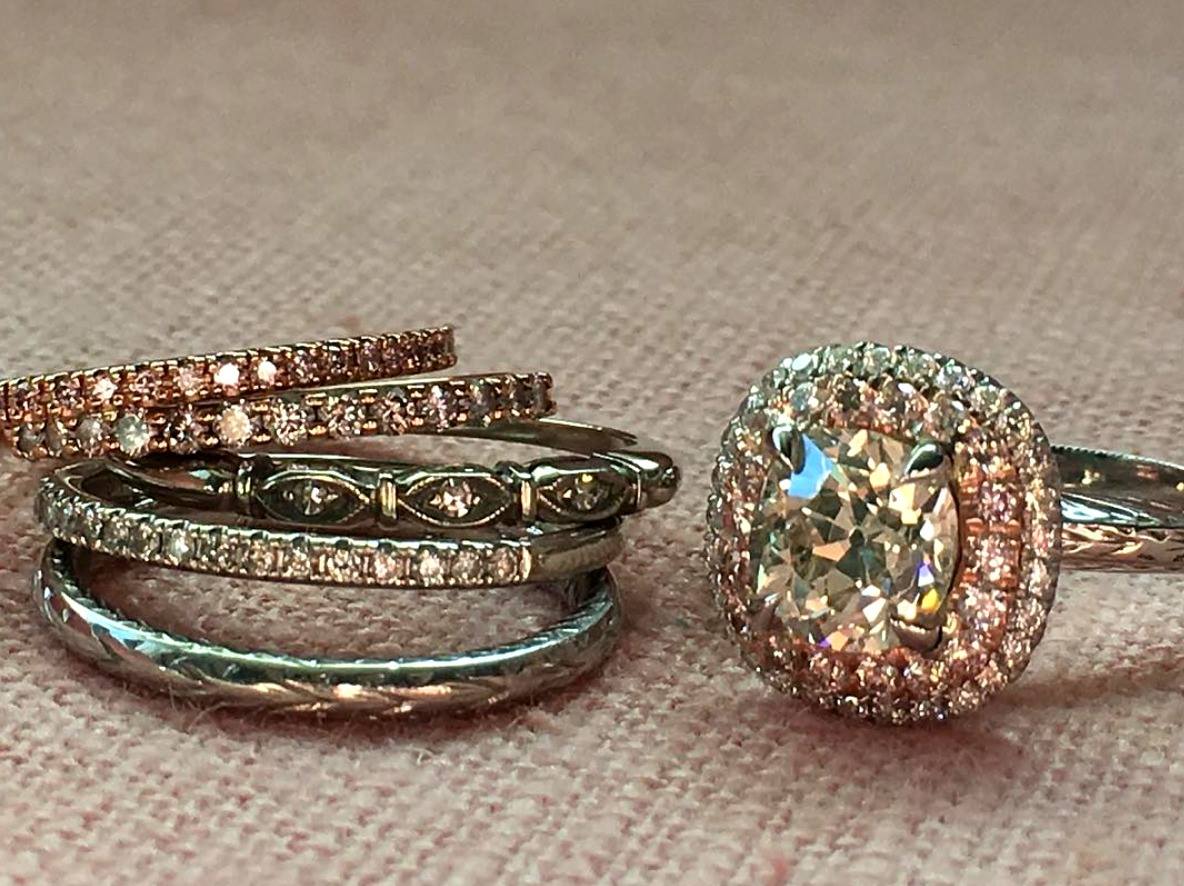A Prong by Any Other Name
Understanding a ring’s anatomy is critical when deciding on an engagement ring. And while most focus on the size and cut of the gem, let’s us not forget the power of the prong!
Different ring designs demand different numbers of prongs. As you might guess, less prongs means less of the gem is covered meaning more access to light and more sparkle.
Four prongs create more a clean, linear and often square look whereas six prongs tend to showcase a rounded shape of a gem more effectively. Too many prongs can overwhelm a smaller gem and too few prongs can leave to an unsafe setting for your ring (something you definitely don’t want!).
Want a less visible look to the prongs on your engagement ring? Consider using white metal which not only highlights the metal but makes the gem appear larger (something you definitely do want!).
Here are a few examples of smartly placed prongs:




